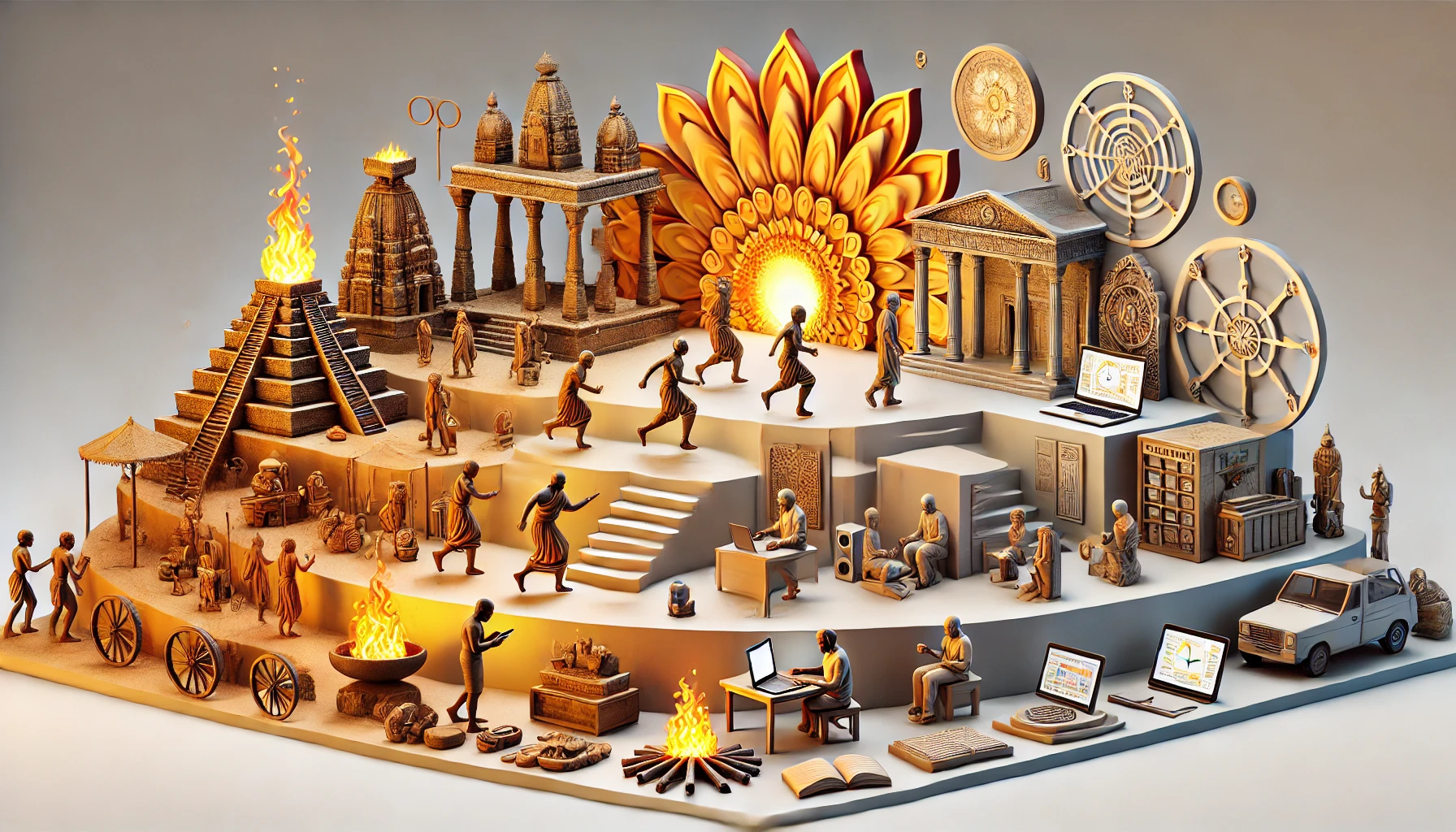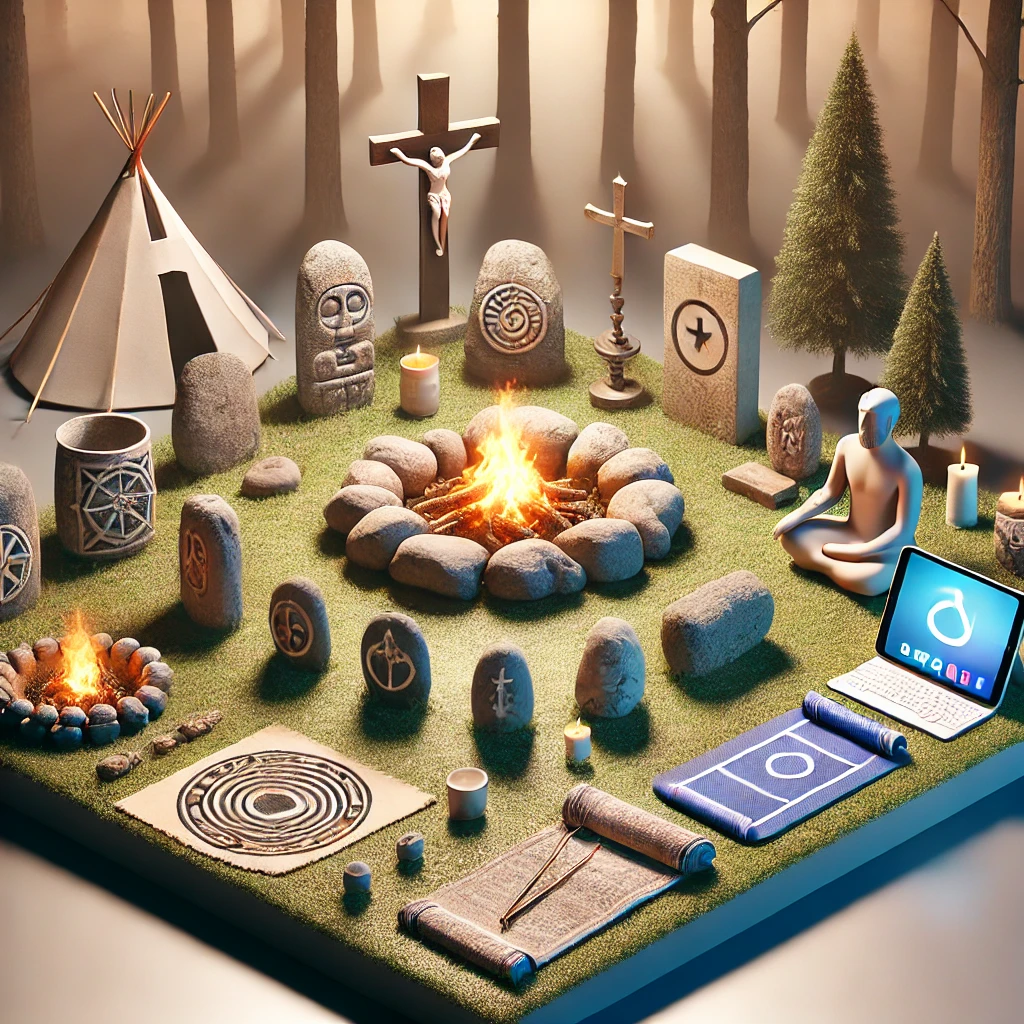

Since ancient times, rituals have been part of human history. They form a crossing point that joins people to their culture, beliefs, and traditions. They often mark important events, express one’s emotions, or enforce values. The passage of time and changes in societal and human thought have compelled religious practices to advance and change forms over the centuries.
Religious practices are not just mere repetition of things, but they also mean something, based on their myths, beliefs, and customs. From knowing how rituals develop, one learns how individuals in different times change their practice according to the changing world.
Despite these differences, the functions of rituals are similar – to bring individuals together. It unites people to the divine, to nature, to community, and to themselves. Humans have evolved, and so have their practices.


Origins of rituals trace back to the prehistoric times. In ancient days, people had used myths and rituals in order to give reasons to the mysteries and enigmas of life and natural happenings. Religious practices, in ancient times, were closely related with nature and fertility, survival. Religious practices in ancient times included offerings, dances, chants with gods, and spirits.
Early religious practices helped in maintaining a harmony relationship with nature by humans. These important ones included seasonal celebrations, hunting rituals, and rites of passage. These ritual stages have been passed from generation to generation, creating a continued and cultural value of people.
It was during the transitioning of societies from unstructured ones to that of civilization that their religious practices began to develop. Egyptian people, for instance, had their religious practices in ancient times to worship gods and guarantee the fertility of the Nile. Ancient Greeks, on the other hand, had their myths and rituals, which were a mixture of religion and social order.
The religious practices in olden India were mostly done in the Vedic traditions, which comprised sacrifice on fire and chanting mantras. They looked to get divine favor, maintain the cosmic order, and gain spiritual growth. Similarly, in China, ancestor worship became a central practice proving again that rituals helped create a bond with one’s lineage.
The organized religions, including Hinduism, Buddhism, Christianity, and Islam, have had profound influence on the development of rituals. Organized religions provided a systematic ritual system with explicit rules and meanings. Important religious ritual dimensions include prayers, fasting, pilgrimages, and ceremonies, which determine how human beings conduct faith and worship.
Baptism, communion, and marriage all were major religious practices in Christianity. In Islam, the holy religious practices that are performed every day are daily prayers, fasting during the month of Ramadan, and performing the Hajj – a pilgrimage to Mecca – are so vital that it is considered almost impossible to even think about not doing them. These religious practices give belonging to a community to the followers.
The modern world is indeed the initiation into a transformation of old-time rituals into current rites. Ancient rituals are religious-communal, while modern religious practices are to highlight self-actualization, good well-being, and social connections.
Individualized rituals have taken over today’s fast world. Today, people develop their own ways of relaxation, mental balance, and productivity. Modern religious practices include morning routine practices, yoga, meditation, and journaling, among others. Such acts help people cope with the pressure of everyday life, find inner balance, and connect themselves.
Even today, myths and rituals continue to remain a very important part of the general culture. Festivals, cultural events, and family traditions are full of these elements, linking people to their past. For example, Christmas, Diwali, and Halloween have ancient religious practices with modern customs.
The entertainment and media sector is also building modern myths and rituals. Movies, books, and video games generate new stories; these stories spur communities in that believe something based on their shared interest. These activities carry certain kinds of religious practices: fan get-togethers, cosplay events, and online forum discussions, for example. It indicated the sociological phenomena of ritual adaptation to time.
The digital era has brought new rituals. Technologies have pointed new kinds of ritual-for instance, virtual meeting, social media engagement, and digital detox. Although styles differ the significance is almost the same-to connect and give meaning.
Digital Rituals include checking for incoming notifications, share activities, and attending virtual gatherings. Though they are different from their analog forms, there has the same purpose: to have people connected and giving a place.
The future of religious practices would therefore merge old with the new. Virtual reality and artificial intelligence introduce new religious practices to celebrate, mourn over, and connect. Yet, at the core of it all will be the meaning, order, and connection that rituals provide.
Myths and rituals are still among the common paths of human experiences, altering along with the changes in values and needs of society. They are the crossroads for humanity to seek meaning, unity, and transcendence.
The development of rituals explains the journey of man in time. From the fire ceremonies with ancient people to mindfulness practices with moderns, these will develop in response to what society deems necessary. They do not stand still; they grow, change, and evolve. Even as things change, religious practices continue to give individuals structure, comfort, and a feeling of belonging. It would only make sense for them to realize their purpose in life: though times change, the need for people for rituals does not.
| Evolution of Rituals UPSC Notes |
| 1. Rituals are ancient practices that connect individuals to their culture, beliefs, and traditions, evolving with changing societal values. 2. Early religious practices were linked to nature, fertility, and survival, with offerings, dances, and chants to appease gods and spirits. 3. Ancient civilizations incorporated rituals into religious and social structures, using them for cosmic order, spiritual growth, and ancestor worship. 4. Organized religions like Hinduism, Christianity, and Islam shaped rituals, providing structure and unity within communities. 5. Modern religious practices emphasize personal growth and well-being, including activities like meditation, yoga, and mindfulness routines. 6. In the digital age, religious practices have adapted, with virtual meetings, social media, and digital habits fulfilling the need for connection. |
Minilateralism is transforming the global diplomacy as it introduces smaller, targeted partnerships in order to…
India’s GDP Growth Forecast Revised Downwards by RBI The Reserve Bank of India (RBI) on…
India is losing its opportunities to sustain agriculture due to severe soil degradation. Recent studies…
India’s Economic Growth Outlook Revised The Reserve Bank of India (RBI) has brought down India's…
Startup Ecosystem in India has emerged as a global leader, with over 140,000 recognized startups…
India’s GDP Growth Forecast Revised by RBI The Reserve Bank of India had trimmed its…